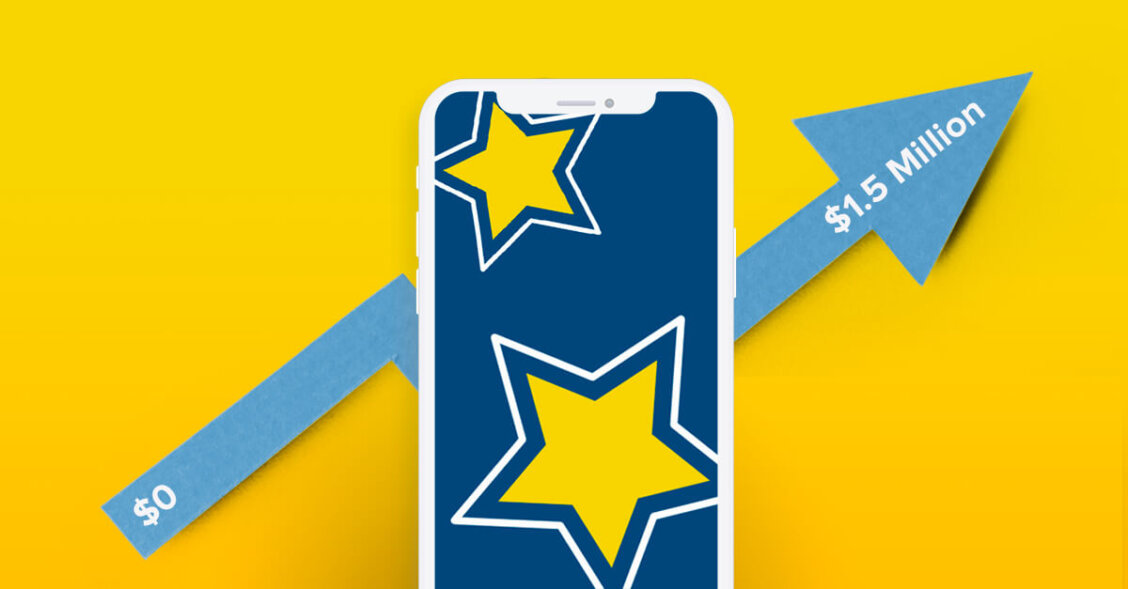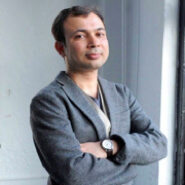
How PuzzleSocial Grew UA Spend From Zero to $1.5 Million per Month (and Got Acquired by Zynga)
“We should spend zero dollars for now.” I went to the whiteboard and wrote the number “0.” We were trying to figure out how much we should spend on our user acquisition initiatives. I recommended that we not grow at all.
In the spring of 2015, I joined a small app developer called PuzzleSocial as the Director of Growth. Our team was just five full-time people including me, and a couple of contractors. Our DAU numbers were small compared to the bigger games that I had worked on in the past.
My mandate was to help grow and scale the game, but here I was, recommending that we actually not spend on growing the app.
That was intentional. We eventually ended up spending – and increasing our spend from 0 to $1.5 million per month. Consequently, we grew our daily active users 7x in under a year – a trajectory that resulted in our acquisition by Zynga.
It was a lot of trial-and-error before we made it work. Here are some of the key strategies that were successful for us.
1. Nail retention before thinking of user acquisition
As you can imagine, the decision not to spend and grow was hard for me as the new Director of Growth. Yet I knew it was the right thing to do.
Our retention wasn’t quite there, and we didn’t know if our ad spend would come back in its entirety. But we were confident that after we nailed the retention piece, we would get to a point of sustainable economics and spend money with confidence.
2. Measure what truly matters
After we improved our retention, we opened up our acquisition efforts. Still, we knew we had to spend responsibly. We had an LTV model that would tell us whether we were making our money back.
At the same time, LTVs and CPIs would be meaningless if we had no cash in the bank. We had to tread with care because LTVs represent revenues that would accrue over a 12-month period – and we would have to keep track of the metrics that ensured our short and long-term financial sustainability.
Other than LTV and CPI, we obsessed over the following metrics:
- Retention. We made sure to acquire only high-retention users. We had built a high-retaining game, and we wanted to make sure our users experienced it fully. This meant saying “no” to incentivized traffic, cheap traffic or geo’s that wouldn’t necessarily work long-term.
- DAU and revenue growth. We looked at our high-level metrics every day and asked ourselves, “are our user acquisition efforts driving DAU growth and revenue growth?” As we saw our DAU and revenue curves slowly trend upwards, we became more comfortable spending and investing in our user acquisition activity. Then, we gradually ramped our spending up from zero to five figures, six figures and then seven figures per month.
- Cashflow. Especially in our early days, we kept an eagle eye on our cash. As a small company, we couldn’t risk coming close to running out of cash. Once we built up enough of a revenue cushion, this pressure diminished, but without a doubt, cashflow was a key determinant of how much we were willing to spend.
3. Test quickly and double down on what works
As we grew our user acquisition efforts, we tested channels quickly and aggressively. In the beginning, we started with three core channels while separately running one or two small-scale experimental channels at a time.
When we began to see consistently strong performance from a new channel we tested, we would immediately double down on it. We spent our effort and time on creatives, analytics, strategy and planning, and increased our investment in the new channels to make them work. This was how we scaled our UA spend on Liftoff to over $200k per month.
4. Diversify across multiple formats
Still, we needed to spend responsibly. Just because we were starting to see revenue growth, we couldn’t take our foot off the pedal. We still looked at our revenue and DAU charts daily, and kept moving up and to the right. We expanded to newer user acquisition channels, making sure we were investing in all ad formats – videos, social, search, playable and display – and tailored our strategy for each format.As we slowly opened up our channel mix, our DAUs and revenues increased. We grew our spending to $1.5 million per month, had 15 UA partners in our acquisition mix and were acquired in 2016.
If you have a strong product with the potential to scale and grow, I hope you’ll find some of the above strategies helpful in informing your own user acquisition strategy.
About Shamanth Rao 
Shamanth Rao is the founder and CEO of RocketShipHQ, a boutique growth marketing firm specializing in performance marketing driven by video ad production. Shamanth was one of the earliest Mobile Heroes. Previously, Shamanth led growth efforts leading to two acquisitions – Bash Gaming (acquired for $170 million) and PuzzleSocial (acquired by Zynga).
About PuzzleSocial
Launched in 2010, PuzzleSocial is the maker of Daily Celebrity Crossword, the world’s most-solved and top grossing daily digital crossword puzzle. The app was developed for iPhone, iPad, Android, Kindle devices and Facebook. PuzzleSocial was acquired by Zynga in 2016.